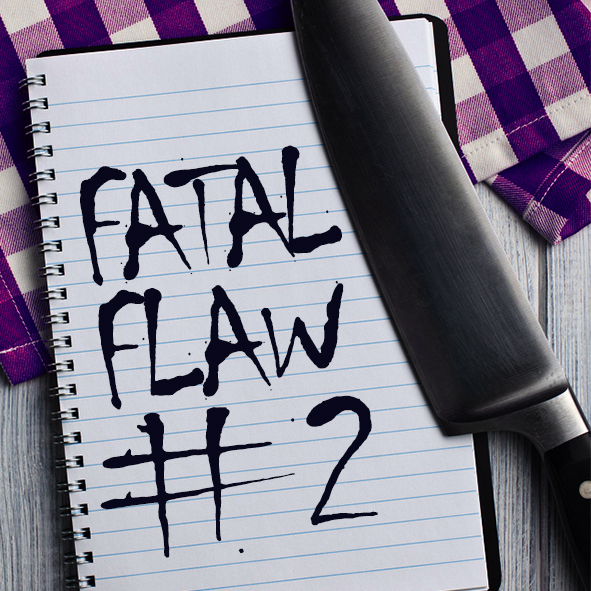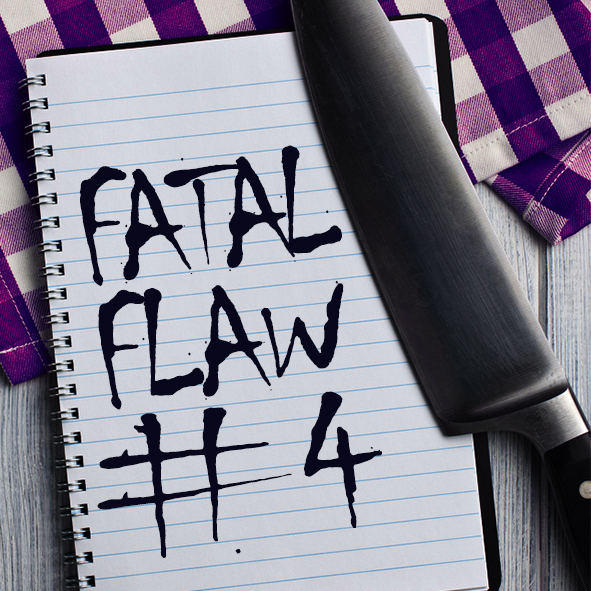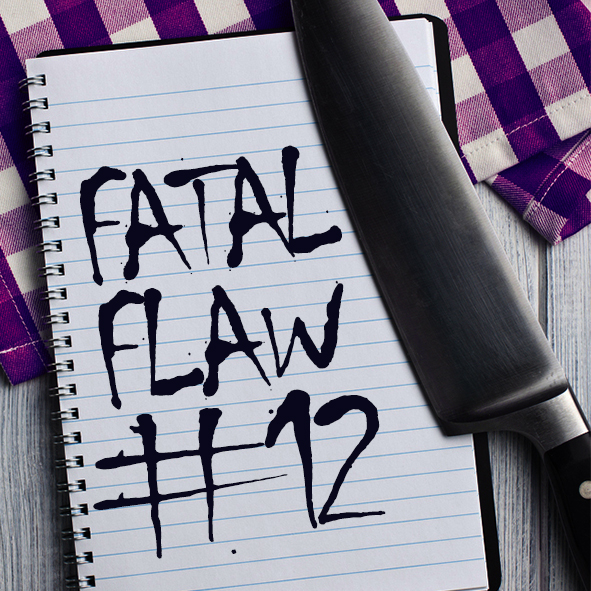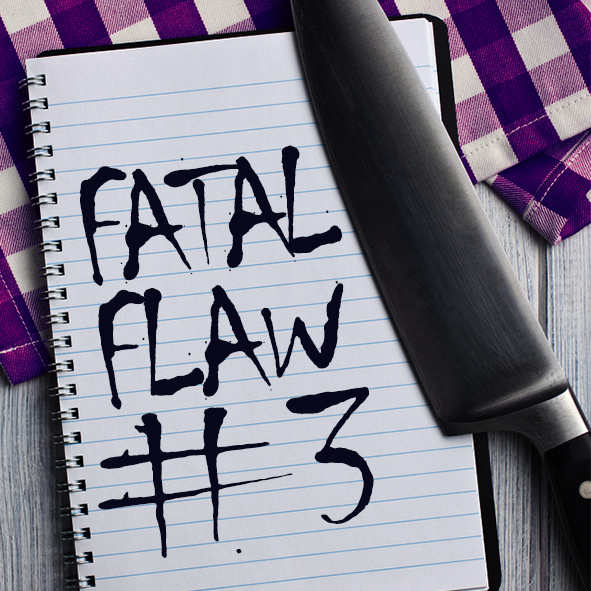In Medias Res—Cutting to the Chase
This month our editors are tackling Fatal Flaw #2: Nothin’ Happenin’. Editor Christy Distler explains in detail what in medias res is, and how to start scenes right in the middle of action. (If you’ve missed the first two posts on the topic, check them out here and here.)
In medias res. If you’ve been writing for some time now, chances are you’ve heard at least one seasoned writer or editor tout its importance. Or maybe not. The first time I heard the phrase was when I joined a critique group and one of the members commended my novel’s first scene with, “Nice use of in medias res.” Wait. In medias what? I thought. Off I headed to Google for an explanation.
Just what is in medias res? Latin for “in the midst of things,” in medias res refers to the literary technique of starting a story in the middle of the action instead of using descriptive narrative to provide background and build up to the action.
We’ve all heard it said that we get one chance to make a first impression. The same is true when it comes to writing fiction. If our story doesn’t capture readers’ attention in the initial few pages (some say in the very first page), many readers simply won’t read on. Even if the story’s pace and action pick up soon after, it won’t matter, because we’ve already lost our reader.
How to Grab the Reader’s Attention Right Away
So what grabs a reader’s attention? Dialog and action, to name two. Yes, description is also important—it embellishes with setting and often-needed background. But in most cases, description can be interspersed throughout to create a story that engages the reader with action and the complementing narrative necessary to ground the story’s setting and situation.
The dialog breaks up the narrative and provides pertinent information without dumping it on the reader all at once. And by starting in the middle of the action, questions are posed and tension is built, making the reader ask questions. Readers want those questions answered, so they continue reading.
Let’s take a look at two versions of the same story beginning, with one excerpt starting with descriptive narrative and one excerpt starting in medias res.
BEFORE:
I followed Mother and Daddy toward the administration building of Covington Hall. The boarding school, which sat on two acres of land in the small town of Covington, Connecticut, consisted of nine dark red brick buildings, all with black roofs and white window frames. The administration building was the largest of the nine and had two rows of ten eight-paned windows across the front on the second and third stories. The first story had two large dark wood doors in the center and four nine-paned windows on either side of them. At the two front corners of the building were thick white pillars that went from the ground to the roof, and a white sign that read Covington Hall in black uppercase letters hung above the door. Cobbled walkways wound around the campus, leading to each of the buildings, and tall trees stood intermingled with them.
I didn’t want to be at boarding school, but I’d made the mistake of being with a girl I hardly knew when she decided to take her dad’s Mercedes and go joyriding. It wouldn’t have been so bad, except she didn’t know how to drive and crashed it into our town’s burgundy and gold sign that read Welcome to Ellington. Her dad blamed me, saying I’d talked her into joyriding, and since he was one of the town’s three lawyers, no one was about to deny that. I got dubbed the town troublemaker, and my mother decided I should go to boarding school.
AFTER:
I crossed my arms and blew my breath out as I followed Mother and Daddy toward Covington Hall. The three-story brick administration building with its two massive white pillars blocked the early morning sunlight, intensifying the chill in the air. Fitting, since the school’s pretentious appearance made it feel just that—cold.
“Covington Hall is one of the best boarding schools in New England.” Mother looked back at me as she held Daddy’s arm. She stopped, turning around, and swiped her shoulder-length hair behind her ear. “Don’t slouch, Cassandra. And don’t look so surly. Your past actions are behind us now, and attending Covington is your chance for a new start. Let’s make a good first impression, yes?”
Next to her, Daddy tried to smile. “Your mother’s right, Cassie-girl. Switching schools always takes some getting used to, but you’ve always handled change well.” He glanced around at the historic buildings, cobbled walkways, and autumn-bronzed trees that stretched around us. “You’ll make new friends—”
“Who won’t land you in the back of a police car,” Mother cut in.
Daddy sighed. “And this’ll soon feel like home. I know you’ll do well here.”
His words were probably meant to ease his own doubts as much as they were meant to comfort me. By the sadness that pinched his eyebrows above his wire-rimmed glasses, he didn’t want me to attend boarding school any more than I did—which was not at all. But then again, I could have a good time anywhere. Covington Hall was about to meet its match.
So what differences did you notice in the two examples? First, the Before gives more description but less essential information. It explains the school’s aesthetics and what the character (name and gender yet unknown) did to end up there, but there’s little tension, no action aside from three people walking, and no dialog to break up the narrative. Read on? Maybe, but only if the action picks up real soon.
The After provides more significant information that will entice readers. Cassandra has gotten herself in enough trouble to end up at boarding school, which will pique the reader’s interest. What did she do? The After also adds two more attention-grabbers—dialog that gives her a name (making her more real) and shows the tension in her relationship with her parents, and the tension that mounts with her challenge to the school.
More questions abound: What’s the deal with her and her parents? Clearly, her interaction with her father is different from her interaction with her mother, but why? And just what does she have in store for the school?
Think of in medias res as a cutting to the chase—getting to the good part. As fiction writers, we can grab our readers’ attention right away by opening with action and dialog that will build tension and get readers asking questions and wondering what will happen next. Intersperse description to ground the story’s setting and situation, and continue to do that as the story plays out. Yes, the description is important, but it’s more critical to engage the reader early on. We have the rest of the story to add embellishment.
Your turn:
What are your thoughts on the Before and After sections? In your stories, do you begin in medias res or do you tend to start with description? Want to share an example of an opening paragraph from a novel you’ve read that is full of narrative and exposition and doesn’t get the action started?











Excellent writing! This is a very clear, understandable piece of work that describes in media res very well.
I especially appreciate the use of ‘in the midst of things’ in classical writings such as Iliad, Odyssey, etc. as it grabs the attention of the audience and feeds them back story as it goes on.
Thanks for bringing a well-defined focus on this device!
B. Tyler Lowe
Thank you, Tyler! It’s funny that you mentioned the Iliad and Odyssey; when I started brainstorming this post, Homer was the first author I thought of.
Glad you stopped by!
This is a similar post on the subject, largely courtesy of Anthony Trollope. Just another perspective! http://involution-odyssey.com/2014/08/05/on-easy-street-in-medias-res/
Thank you, Philippa. I’ll take a look.
Glad you stopped by!
Yep, that first example was fatal, all right. I doubt that I’d have finished the first paragraph if I were just picking up the book to see if it interested me.
That description is probably important, or could be made so–eight-paned windows need a reason for being noticed–but that’s not the stuff to open with.
Thanks again; good article.
Curtis
Thank you, Curtis. The Before example is pretty painful. And you’re right—the description is important, but it has it’s place.
Glad you stopped by!
This is such a good and important post, Christy, and two examples you use from Covington, Connecticut are perfect!
Many newbie writers tend to write chronologically since that’s how people live our lives outside our minds. In a way, we don’t recognize we can think differently when it comes to our writing. I’m a big proponent of in media res though it’s something all writers need to learn at some point.
After I finished my second novel and wasn’t getting any bites from literary agents, I decided to give my manuscript to an editor to review. She came back and, in a nervous voice, suggested I cut the first 200 pages from the book. Entirely. She must have thought I was going to hit the roof but as soon as she made the suggestion, I realized exactly what she was going for. And she was right.
It took all of that nano-second for me to realize the importance of throwing your characters into the midst of things, and my first 1999 pages were just getting through the passage of time before things happened. You don’t have much time to hook the reader and there are a lot of books they can read, so enough of the chronological nonsense. Give readers something they can get into so they don’t go away!
Thanks Christy, for this insightful post.
Joe
Excellent example, Joe, and you’re quite right about the chronological aspect. Many writers also feel they must establish a fully described setting before beginning the story’s action. While description of setting is necessary (especially in genres like Spec-Fic and Historical where the setting may be quite different from our natural surroundings), there needs to be action to keep the reader reading.
Thank you for your kind words and for sharing your particular example. I’m glad you stopped by!
Another timely, and very useful article. I returned to some writing which I hadn’t looked at for a couple of years, edited the beginning to within an inch of its life, then got this advice this morning!
I’m glad it was helpful for you, Susannah. Isn’t it amazing how you look at a manuscript differently after being away from it for a while? Best wishes with it.
Thanks for stopping by!
Great examples, Christy. I love that second one. That’s a book I want to read. That last line–“Covington Hall was about to meet its match”–that’s priceless.
Thanks, Robin! Cassandra will be making more appearances in posts to come. 🙂
Very important post that every writer should read. I’ve given up on two indie books because there were whole CHAPTERS of info dump at the beginning! For one of them I suspect it was entirely written in narrative, but I can’t be sure because I quit reading it. But what I did read, which was several chapters of material, didn’t hold a single dialogue as far as I remember. I didn’t quit because what I was reading was exactly boring, but because at one moment I stopped and thought, why the hell am I reading all this empty narration?
Thank you, Catie. I’ve had the same thing happen, where I’ve lost interest because the story drags with not enough action/dialogue.
Glad you stopped by!
Great example. In the Before, I skipped most of the first paragraph to get to the “good stuff.” The After was more fun to read and I didn’t feel so distant from the character.
Great points, Marcia. I totally agree (and I wrote it!).
Thanks for stopping by!